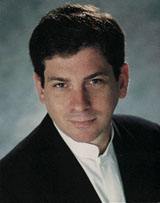

DR. WARREN LENT
150 N. Robertson Blvd, Suite 140
Beverly Hills, California 90211
(310) 652-6500
info@mybestplasticsurgeon.com

Zen and the Art of Rhinoplasty
Here I sit, in the lotus position, contemplating balance, harmony and inner peace. It is with this same sense of calm that one should approach any cosmetic or reconstructive procedure on the nose.
Balance
Symmetry or balance of the facial features is ultimately the most important component of beauty. In short, all of the parts should look like they fit together, 
 that they are all proportionate with one another. Small delicate features should be balanced with other small delicate features, while large features need to be matched with large features. A small petite nose would look very odd on a large boned football player, thus it is essential that as one begins to evaluate a nose, one must see the whole individual.
that they are all proportionate with one another. Small delicate features should be balanced with other small delicate features, while large features need to be matched with large features. A small petite nose would look very odd on a large boned football player, thus it is essential that as one begins to evaluate a nose, one must see the whole individual.
When a patient consults with me on changing the shape of their nose, I always start by first evaluating the relationship between the nose and their other facial features and then by analyzing the proportions of the individual components of the nose. Understanding whether an imbalance exists between any of these parts usually gives the best clues into what the patient is really complaining about. It also makes it easier to understand where corrections need to be made and can help lay the foundation for the planned procedure. Every patient is an individual that presents with a unique set of circumstances and require a plan that is tailored to their specific needs and goals. This is one of the reasons that I enjoy performing Rhinoplasties so much.
Harmony
Never underestimate a Rhinoplasty. It should never be considered some simple and quick 45-minute procedure. Most plastic surgeons agree that it is one of the more complex and difficult procedures that we perform.
The open vs. closed approach to Rhinoplasty is a profound debate in the Plastic Surgery world that has often spilled out into the general population that leads to much confusion for patients. Both approaches work well and should be applied to the patient based on their individual need. The only practical difference to the patient is the tiny scar under the nose. This scar usually heals well and is well camouflaged under the nose where it is difficult to see. The joke in the plastic surgery world is that "it can only be seen by dogs and lovers." This one little scar however, can open up a world of possibility to the operating surgeon. Making a nose look good is done by some combination of altering the underlying cartilages and bones that give the nose its shape. Through this little incision, the surgeon can now see and make these alterations with great precision, which ultimately leads to a better final result.
Inner Peace
In this case, peace comes from having clear and free passages on the inside of the nose. Distortions and overgrowths of the structures inside can lead to narrowing and blockage of the path of airflow as it travels through the nose. These distortions are often found in combination with the outer deformities. Those same forces, such as trauma or congenital influences, that led to the outer appearance will also lead to changes on the inside. Rhinoplasty presents an opportune time to correct these inner obstructions and with proper planning can lead to easy, free and peaceful breathing. Zen implies attaining understanding through calming meditation. I believe, after years of seeing patients in my Beverly Hills and Los Angeles practices, the best way to approach nasal surgery is with this same sense of calm confidence. Understanding the harmonious relationships between the parts of a person's face, combined with the correct approach and techniques, while placing equal emphasis on improving and maintaining clear nasal breathing are the best ways to achieve the ultimate results for this complex part of the body.







